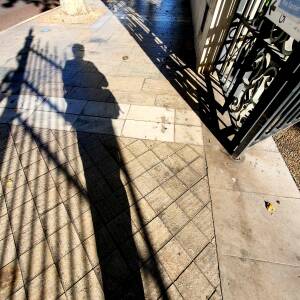Monochrome
To the National Gallery for the Monochrome: Painting in Black and White exhibition.
Why paint without colour? For mood (such as subdued images for Lent), to try out how a sculpture would look (unaware that classical sculptures were actually painted in bright colours) or as a trompe l’oeil ‘sculpture’. Because you're Bridget Riley or Malevich. But to be honest, quite a lot of the monochrome pictures on display, over six centuries, were actually black and white in colour, with little hints of blue or red sneaked into the grisaille.
And then the immersive Olafur Eliasson who had filled the final room with mono-frequency sodium-yellow light tubes which suppress every other colour in the spectrum. At the entrance to the room vibrant orange light spilled out but everyone who walked in saw others and then themselves as colour-drained, shades-of-grey beings in a pool of yellow light. The reaction was fantastic: first a smile, often a laugh, and then a reaching for the phone to record the mystery. Then the discovery that camera sensors are not the same as the human eye (cf photos of Northern Lights) so in pictures everything was orange, not grey. Wonder. Awe. People started talking to strangers, taking photos of others, offering to take photos of others, asking others to take photos of themselves.
Then new discoveries in this yellow light: the colours on a mobile phone screen, especially red, were still visible as colours even though the room drained all other colours.
And later, realising that the final room had drained emotion and memory from the earlier rooms...

Comments
Sign in or get an account to comment.


